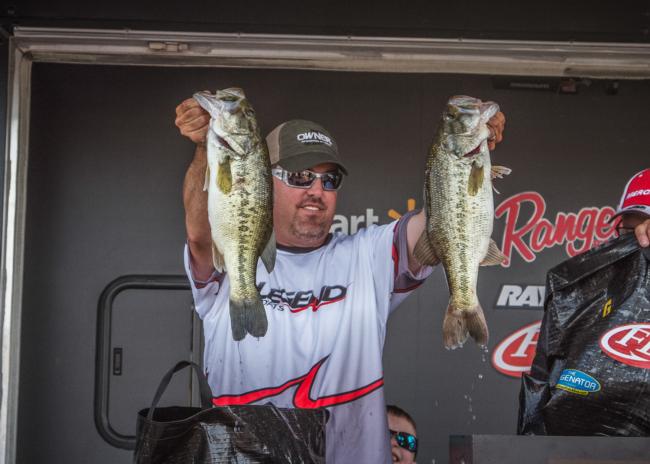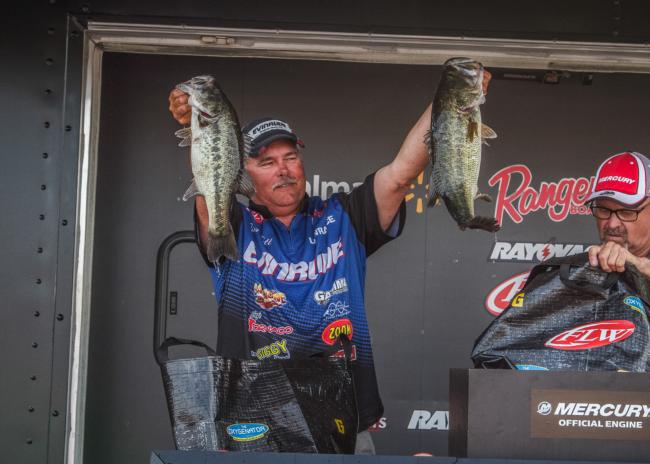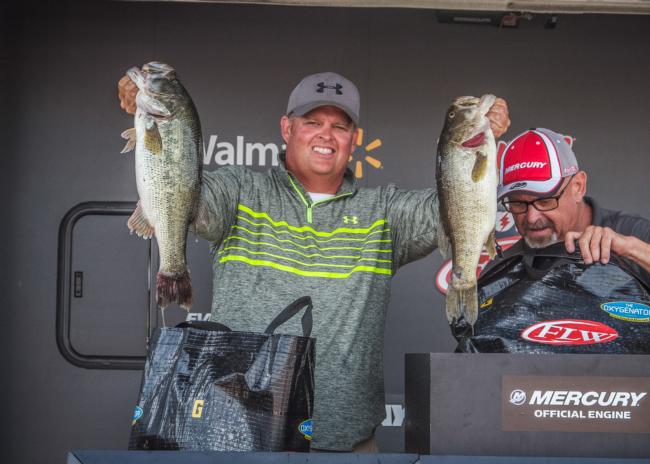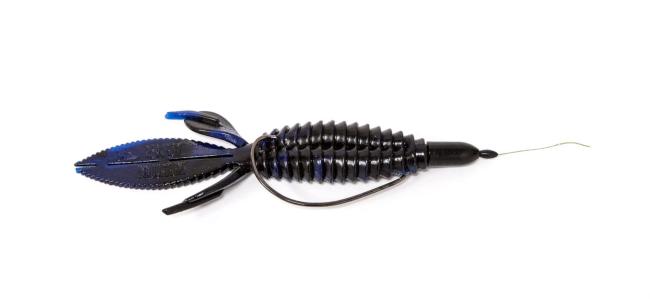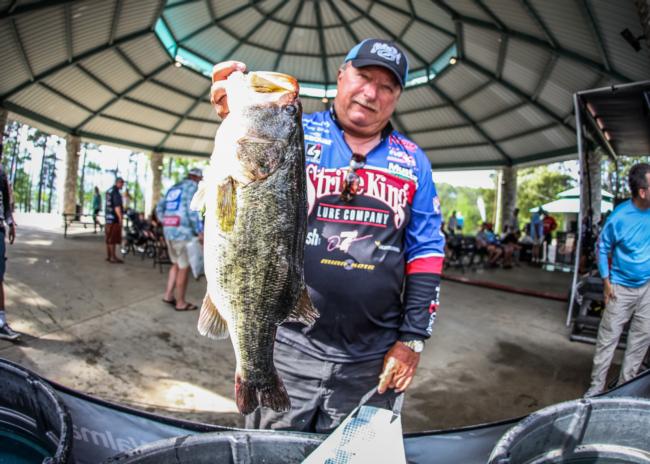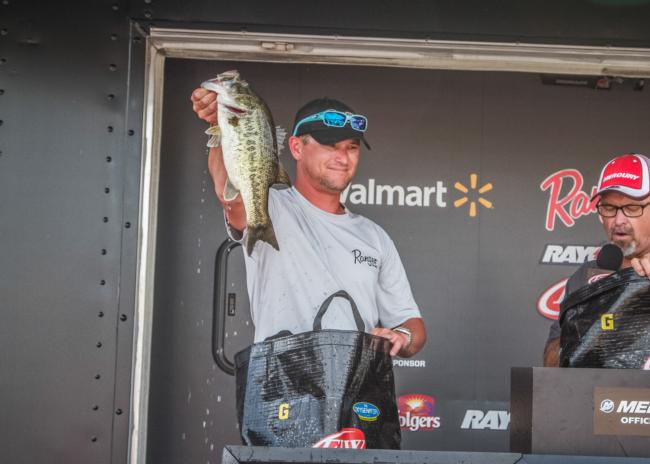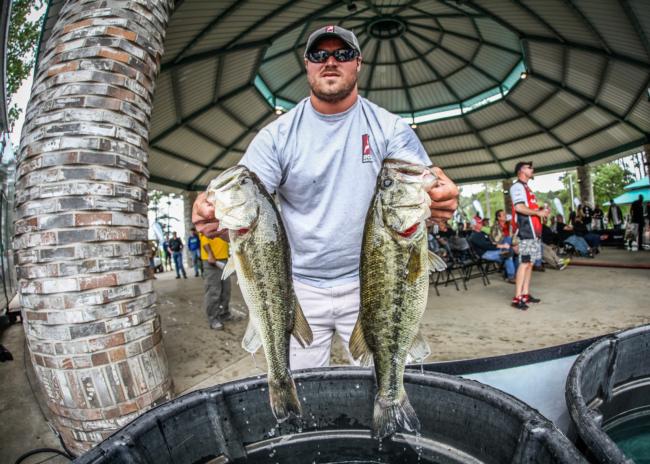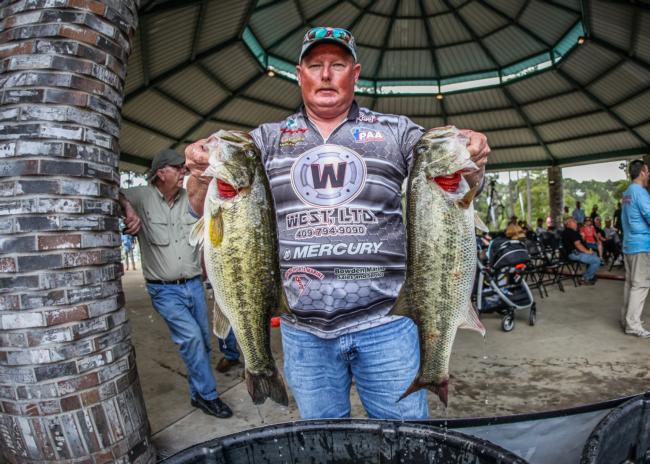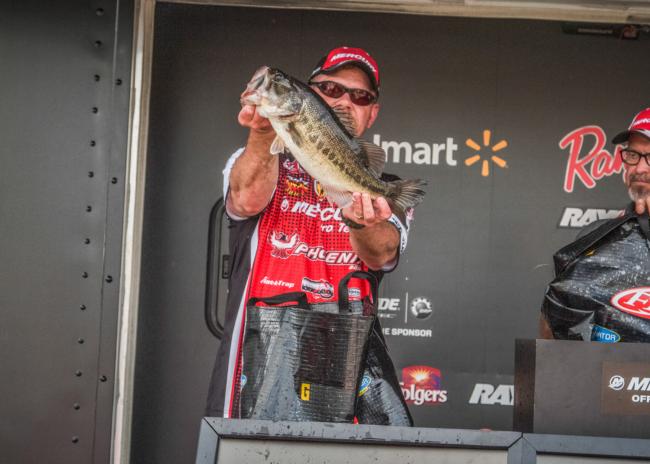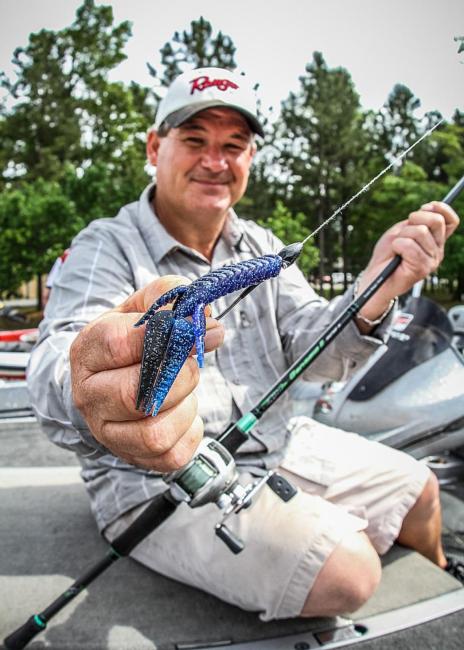Top 10 Patterns from Sam Rayburn
How the Rayovac FLW Series Texas Division event went down
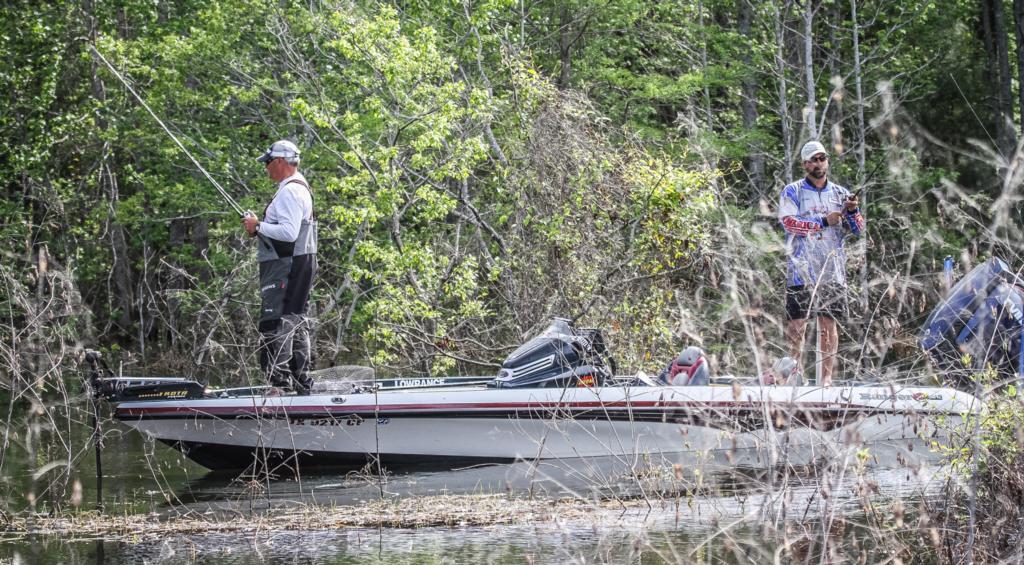
With heavy rainfall swelling Sam Rayburn Reservoir, this Angelina River impoundment had risen 5 feet above normal level by the start of the Rayovac FLW Series Texas Division tournament. This gave fish and fishermen access to miles of shoreline forest and brush that normally stand in mere inches of water – if not on dry ground.
Flipping and pitching this flooded cover gave Ray Hanselman his second win in as many Texas Division events – he also won the opener on Lake Amistad in mid-February. Most of the other top 10 finishers pursued similar plans, but a couple came up with unique approaches.
Here’s a look at second through 10th places:
2. Wilson Drags up to Second Place
Bucking the dominant trend of flipping and pitching, Kris Wilson fished exclusively with a Carolina-rigged Big Bite Baits lizard. Not only did he avoid the headaches and heartbreaks his fellow pros often experienced in the heavy cover, he also had a steady flow of fish in his zone.
“I knew a lot of these fish were postspawn, so they would be coming to me,” says the pro from Montgomery, Texas. “Also, they were pulling the lake down, so I knew that would bring some of those fish to the outside edges.”
Wilson rigged up with a 1-ounce weight, 4/0 hook and 4-foot leader of 17-pound-test fluorocarbon. He fished the inside edges of the “hay grass” – straight, thin-bladed bank grass – in about 8 feet of water during the mornings and then moved to the outside edges in 14 feet in the afternoon.
Long casts parallel to the grass edges and a slow dragging retrieve produced most of his catch. If Wilson felt the fish nipping at his weight, he’d speed up the retrieve just long enough to pull his bait into the active fish.
3. Tutt’s “Weighting” Game Pays Off
Jim Tutt fished deep in the flooded cover, but while most who did the same were throwing beaver-style baits, the Longview, Texas, pro went with a 6-inch Gambler Ace – a soft stick bait that gave the fish a different look with its enticing flutter. He wasn’t powering the bait through brush and flooded tree limbs. Rather, he flipped and pitched the bait into shadowy gaps adjacent to the heavy cover.
Integral to the horizontal fall that Tutt wanted to achieve was a modification he makes to his 3/0 Gamakatsu Superline EWG hooks. Needing a weighted hook to maximize the Ace’s fish-tempting fall, but lamenting the worm trauma of pushing a wider shank through the plastic bait, Tutt wrapped Storm SuspenDots around the shank of his standard hook and then coated the weighted section with black fingernail polish.
“You can add as many SuspenDots as you need for the right sink rate,” Tutt says. “If it’s windy, you can put on more.
“Those fish eventually chew the weights off, but they’re easy to replace,” he adds. “I keep several weighted hooks made up so I can just tie on a new one if needed.”
Tutt’s top Ace color was black/blue flake with blue tail.
4. Stricklin Uses Better Beaver Hook Placement
James Stricklin Jr. of Hot Springs, Ark., caught all of his fish in heavy cover with a Reaction Innovations Sweet Beaver in the magic craw and hematoma colors. Adding a pegged 1/2-ounce weight and a 3/0 Gamakatsu Superline EWG hook might sound fairly straight forward, but Stricklin has an interesting way of hooking his bait.
He uses a Texas-rigged setup that starts with the hook set through the bait’s head just deep enough to pull the bait onto the neck of the hook. But rather than inserting the hook point into one of the bait’s broad sides, pulling it through and pinning it on the opposite side, Stricklin brought the hook point out the narrow side of the bait, laid the hook flat against the wide side of the body and skin-hooked the point in the ridges on the wide side.
“I found that with a traditional Texas-rigged hook placement, when the bait bumps down through the cover, it’s too easy for the hook point to pop out and snag because it doesn’t take much for it to poke through the soft bait,” he says. “Hooking it this way, I don’t snag as much, and when a fish bites, I get a good hookset.”
5. Brauer Powers through Injury
Talk about playing with pain. The tournament got off to a rough start for Denny Brauer when the legendary flipping master suffered a severe injury to his left shoulder on his first hookset of day one. Brauer gutted it out and took second place that first day, but the plaguing discomfort and the awkwardness of essentially fishing with one arm would stymie his productivity.
Nevertheless, Brauer put up a performance that would have been over on day one for most. His main deal was flipping buck brush with more of a swinging pitch presentation.
Brauer fished a Strike King Rage Bug in summer craw and a Strike King Rage Craw in black blue flake. He rotated baits as needed, but found the Rage Bug more effective in the afternoons, or in muddy water. He rigged his baits on a 4/0 Mustad Denny Brauer UltraPoint Grip-Pin Max flipping hook with a 3/4-ounce tungsten weight.
“I needed that heavier weight to get the bait through the thick cover,” Brauer says. “Also, the fish were heavily pressured, so I think they were reacting to that sudden fall.”
6. Setina Stays in the Thick Stuff
Day-one leader Joe Don Setina made it his mission to flip his Strike King Rodents into the densest, most challenging cover he could find. The plan worked well on the first day, as Setina lead the field with 23 pounds, 6 ounces – the tournament’s heaviest limit.
However, the risky game would rob him of several key fish that used the tangled mass to leverage their escape.
“Not a lot of people were keying on that,” Setina says. “I went behind someone who only caught two fish, and I caught three fish behind him. Guys were going around the outside, and I was going into some of the thickest junk you can get. But it was very hard to get them out.”
Setina rigged his bait on a 5/0 straight-shank hook and 3/4-ounce weight. He fished junebug and watermelon Rodents. The former worked best in the mornings, while the latter – accented with chartreuse tips – excelled later in the day.
7. Goodwyn Gets Right to the Point
It was straightforward brush busting for T.J. Goodwyn. The Center, Texas, pro flipped and pitched a black-and-blue Reaction Innovations Sweet Beaver rigged on a 5/0 Mustad Denny Brauer UltraPoint Grip-Pin Max flipping hook with a 3/4-ounce tungsten sinker.
He mostly targeted buck brush and willow trees in 3 to 7 feet of water on main-lake points abutted by flats. The actual cover varied little from that of the flooded shorelines, but for Goodwyn, it was more about the ease of access.
“I could get to the right depth range without having to get way back in,” he says.
8. Guy Transitions from Trees to Bushes
On the first two days of the tournament, Ricky Guy fared well by flipping the flooded trees north of the State Highway 147 Bridge in an area known as the Canyons. Here, he found the fish orienting to larger sweet gum and willow trees, particularly the trees with green foliage.
“On day three, that didn’t work out for me. I don’t think I had a bite on a tree, so I had to fish nothing but bushes,” he says. “I think the biggest thing was the fishing pressure. But another thing, the wind stopped blowing in the area where I was [the morning of day three], and the bite really fell off after that.”
Guy fished a black-and-blue Sweet Beaver with a 4/0 Gamakatsu Superline hook and a 1/2- or 3/4-ounce pegged sinker. He based his weight choice on depth and cover thickness.
9. Sitz Bombs Specific Trees
Also flipping and pitching the heavy stuff, Randy Sitz of Prosper, Texas, favored the Missile Baits D-Bomb rigged on a 4/0 Gamakatsu Superline hook and a 1/2-ounce Elite Tungsten weight. Sitz says his best scenario was a pair of trees with dense vines growing between the trunks.
“I’d catch some smaller fish on isolated trees, but most of the big tournament fish were in the really gnarly stuff,” Sitz says.
He chose the D-Bomb because he found the bait’s smoother surface design allowed it to slide through cover more easily to reach the critical center area.
10. Dickerson Does Hard Time
Tommy Dickerson alternated between a Gambler Why Not and a Sweet Beaver rigged on Strike King Hack Attack Heavy Cover Flipping Hooks. He rigged baits with 1/4-, 1/2- and 3/4-ounce weights. The 1/4-ounce model handled spots with lighter cover, while the 1/2-ouncer saw most of the duty for dense brush.
“It seemed like when the wind came up, you needed to have a little bigger weight so you could have a little better feel for it,” Dickerson says.
The pro from Orange, Texas, had his best luck in brush near hardwoods. His thought: Fish were spawning in the root masses and using the brush on their way in and out of the area.
